During a pile press-in operation, behaviour of the pile/sheet pile is hydraulically controlled through the real-time measurement of their penetration while they are pressed into the ground under static load. This is one of the excellent characteristics of the press-in principle which enables the performance of structures to be verified during construction work by visualising the underground conditions.
Automatic machine operation for optimised press-in piling through the visualisation of underground conditions
The PPT System is an integrated construction system based on the combination of its advantages with ICT technologies.
It automatically optimises press-in conditions such as press-in speed, chuck revolving speed and press-in/extraction stroke in real time through the estimation of ground information with data on press-in force, torque, etc. acquired during pile press-in operation.
The PPT System, a technology compatible with the i-Construction (productivity improvement project) promoted by MLITT, Japan, contributes to energy saving, labour saving and productivity improvement at construction sites.
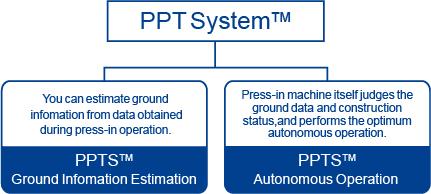
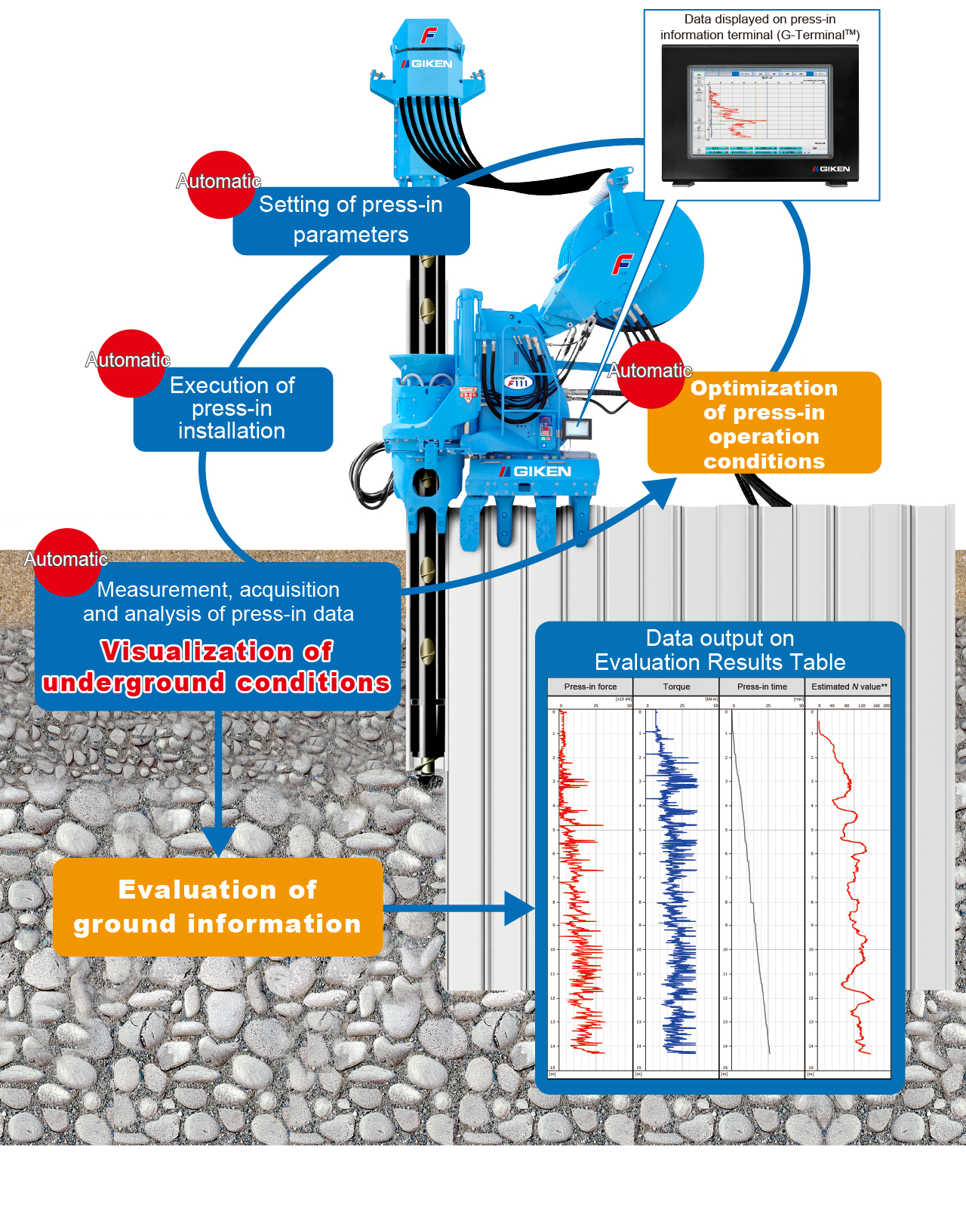
PPTS Ground Information Estimation
Estimation of ground information with data obtained during press-in operations
The PPT System analyses press-in monitoring data (press-in force, torque, speed, time and depths) automatically acquired during press-in operations, thereby estimating ground information such as soil properties and extrapolated SPT-N values as in the case of CPT (Cone Penetration Test) and SPT (Standard Penetration Test).
The PPT System has the feature of creating and displaying the Evaluation Results Table while continuously recording and storing estimated data on the G-terminal (press-in information terminal) mounted on the press-in machine.
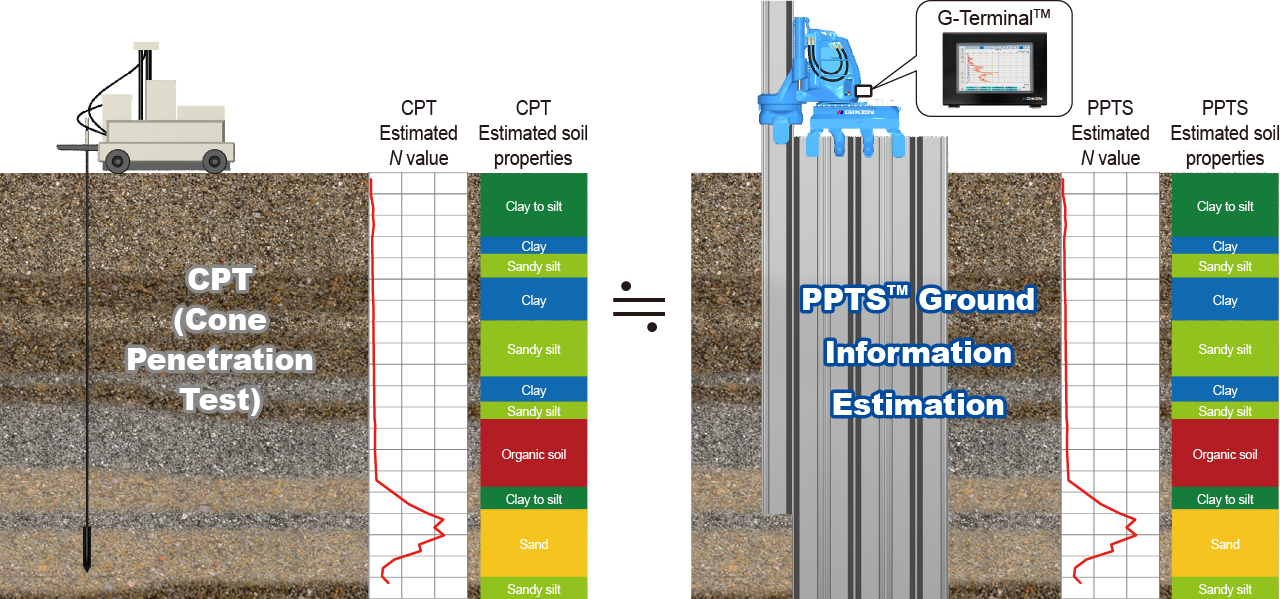
PPTS Ground Information Estimation covers soil properties, extrapolated SPT-N value and cone index (qc value) in a standard press-in operation and extrapolated SPT-N value in a simultaneous augering press-in operation. As shown in the example below, the waveform recorded by the PPTS Ground Information Estimation is almost identical to those obtained in CPT and SPT.
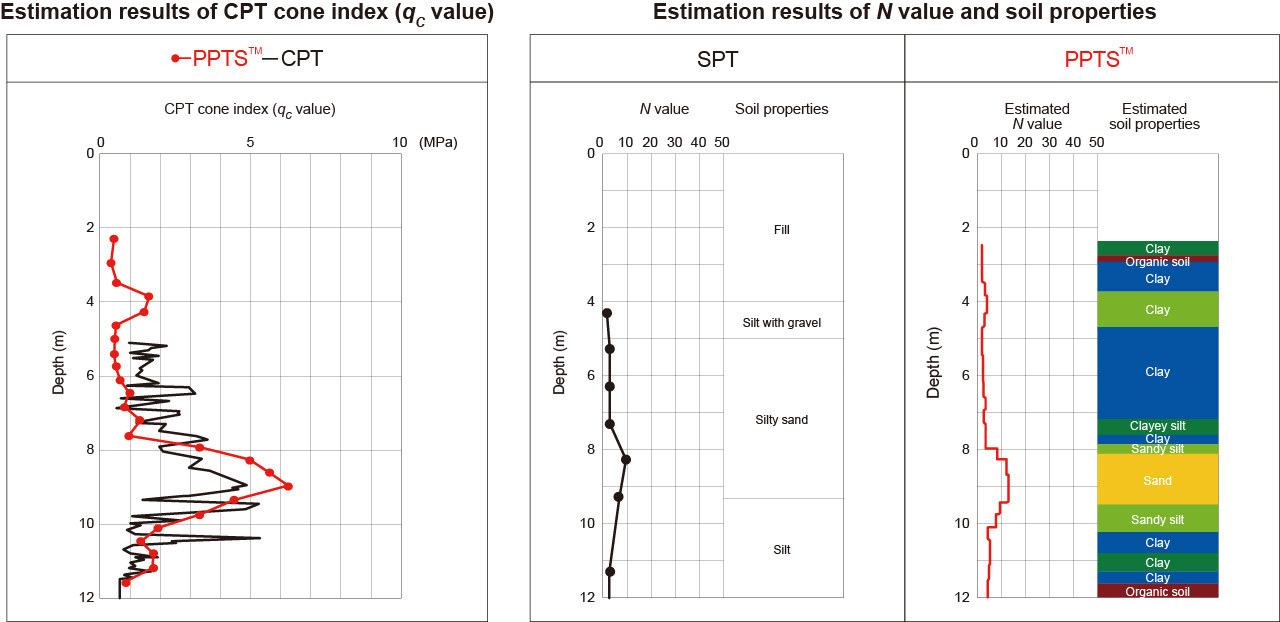
Availability of continuous estimation of ground information
With its capability to continuously estimate ground information with data acquired in press-in operations, PPTS™ Ground Information Estimation will allow you to objectively choose processes, especially when you encounter unexpected ground conditions.
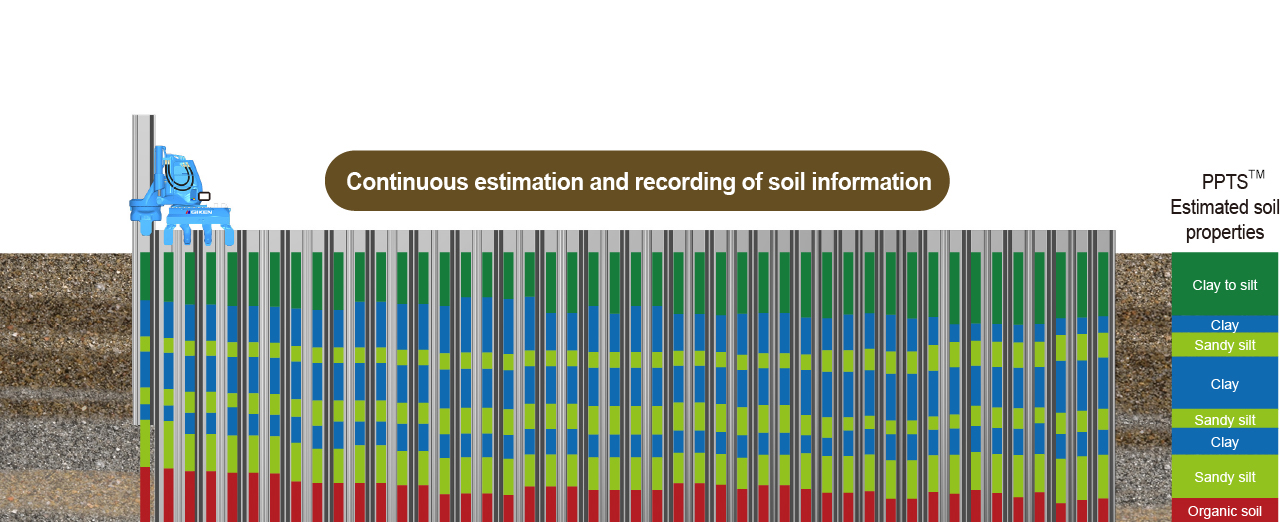
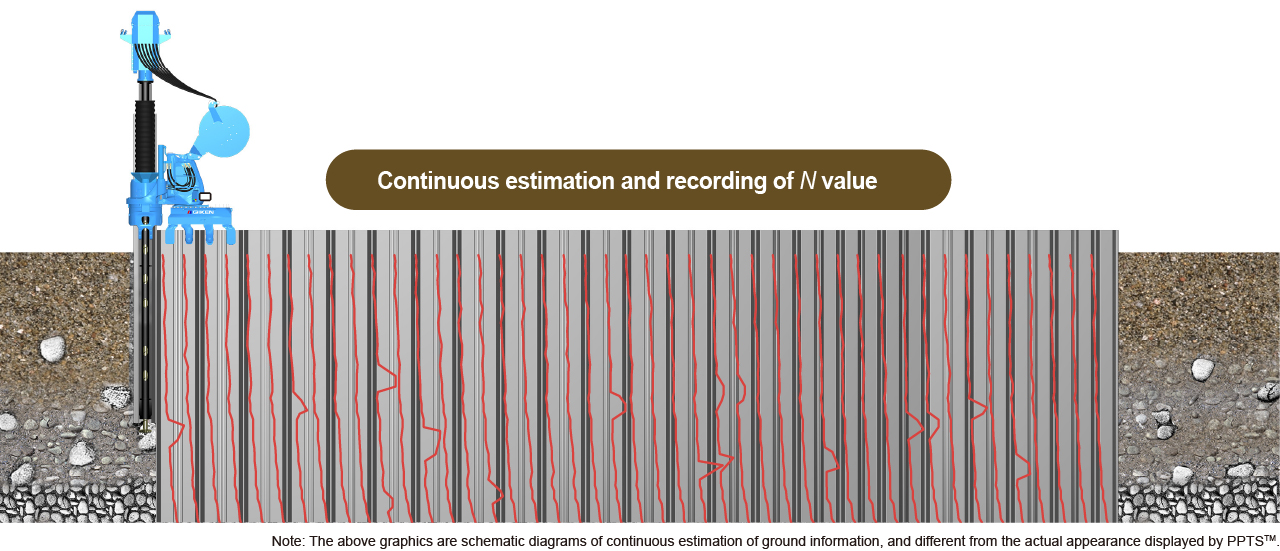
Advantages of PPTS™ Ground Information Estimation
1. Availability of construction management through on-site comparison of on-going work with design conditions
Even when a piling location is away from a location where a soil investigation was conducted, PPT System allows you to acquire the actual ground information at each pile position, thereby implementing construction management while comparing ongoing work with background information at the design stage.
2. Easy decisions making on design changes
PPT System allows you to make objective decisions on whether the initial design should be changed when you encounter unexpected ground conditions during construction work.
3. Trustworthy evidence for quality control
Data of pile embedment control and refusal criteria control for each individual pile can serve as reliable evidence of quality of the driven piles. They may contribute to saving energy and streaming operations including on-site witness inspections and completion inspections.
PPTS™ Autonomous Operation
Press-in machine autonomously determines ground information and construction conditions for optimised automatic operation
Conventionally, operators needed to manually set operation parameters such as press-in force, torque and machine posture based on preliminary investigation reports and monitoring active situations. In contrast, the automatic operation available with PPTS achieves optimized piling operation under the press-in machine's control with acquired data, autonomously recognizing machine posture and ground conditions.
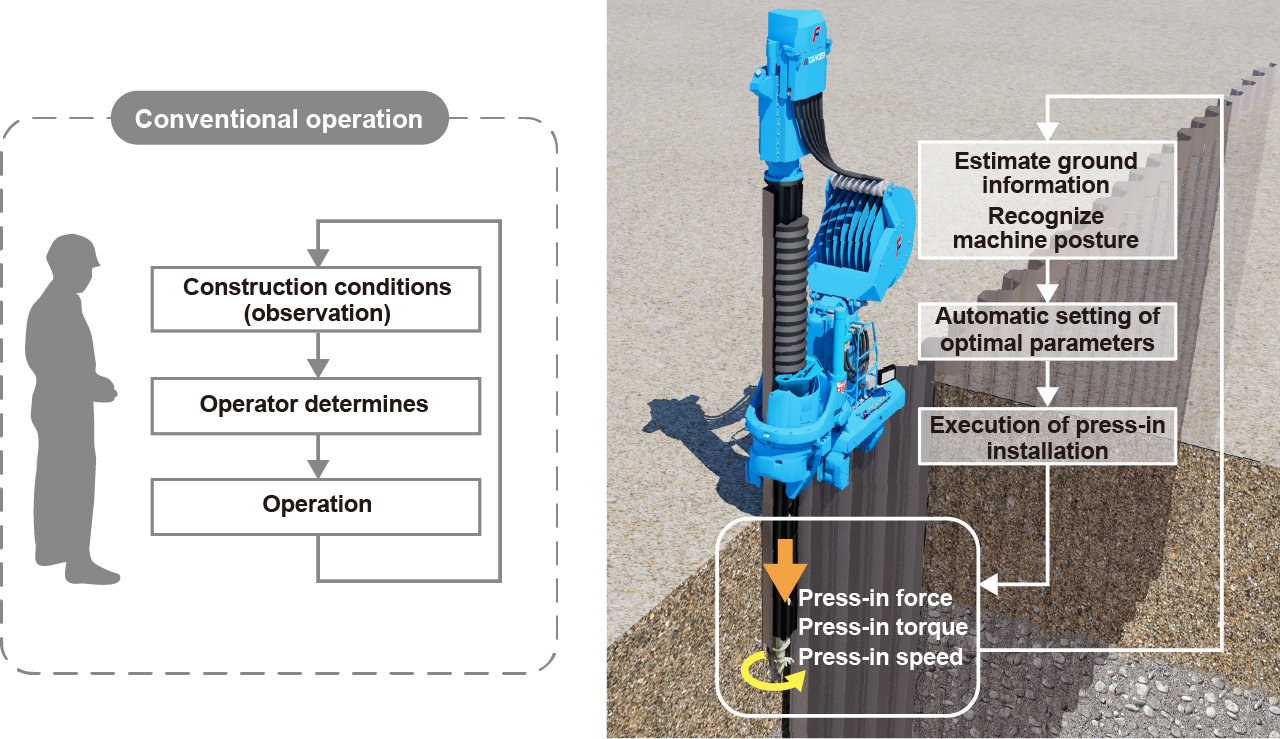
Shortening of Construction Time
In conventional manual operation, pile installation time is greatly affected by the operator’s individual judgement for parameter setting and time lag spent for shifting operation switches. The following examples of the application of the PPTS Autonomous Operation and manual operation show that the PPT System optimised the balanced combination of press-in force, torque and press-in speed, thereby reducing press-in construction time as a result.
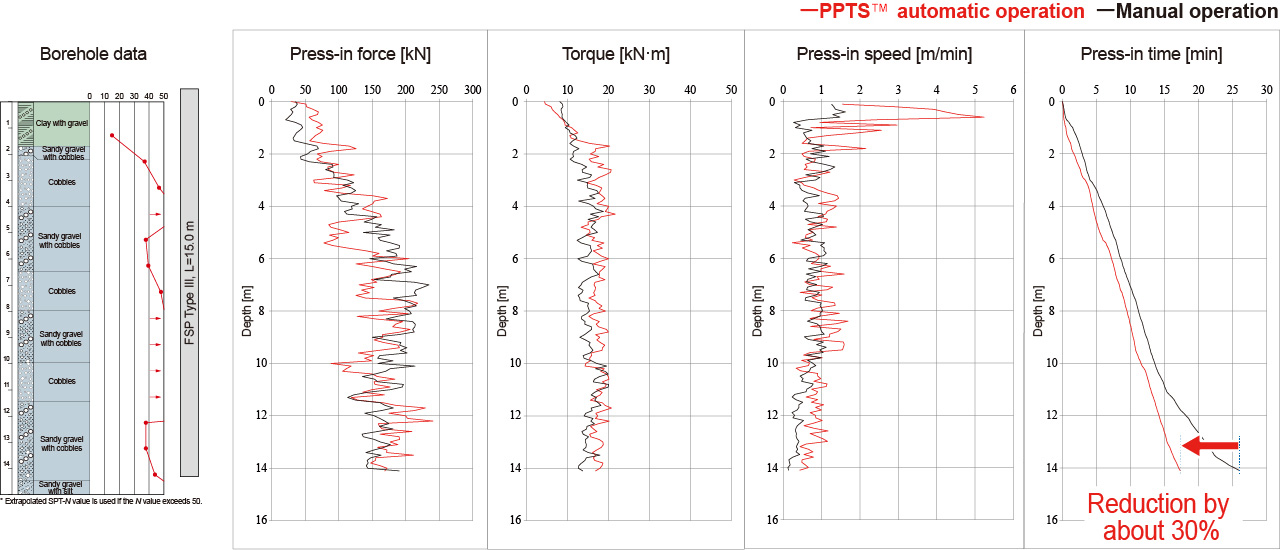
Optimised construction
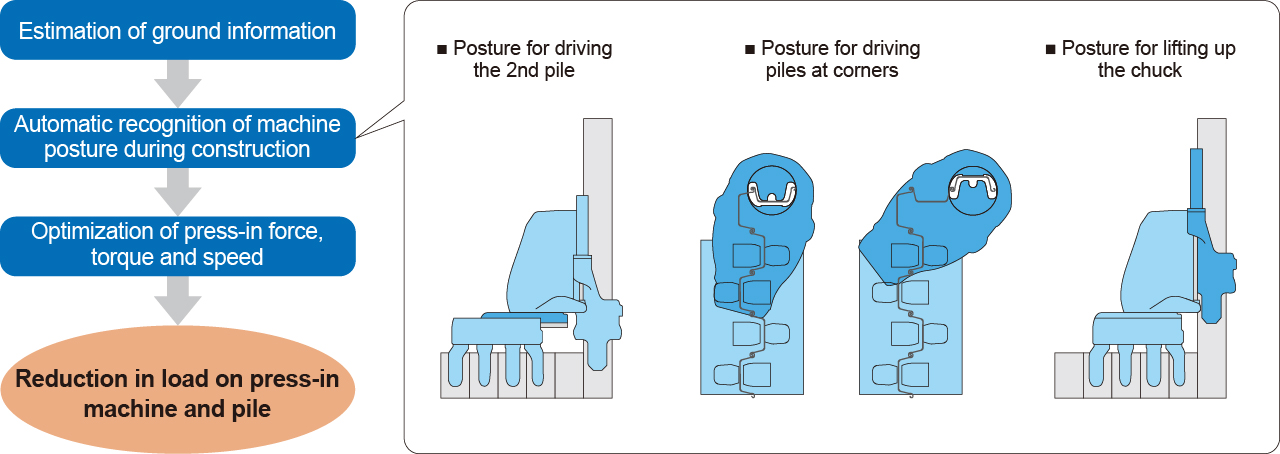
Advantages of PPTS™ Autonomous Operation
1.Shortening of operating time
The press-in machine's autonomous determination always optimizes press-in parameters thereby improving construction speed.
2.Effective solution to the shortage of skilled operators
Enabling construction work to be carried out independently of the operator's skills, the PPTS Autonomous Operation is a good solution to the shortage of skilled personnel and reduces the time for operator training.
3.Maintenance of high piling accuracy and extension of the service life of the press-in machine
The PPTS Autonomous Operation enables a press-in machine to be always operated in the optimised conditions, thereby protecting piles and the press-in machine from overload.
Press-in Machines which can be equipped with PPT System™
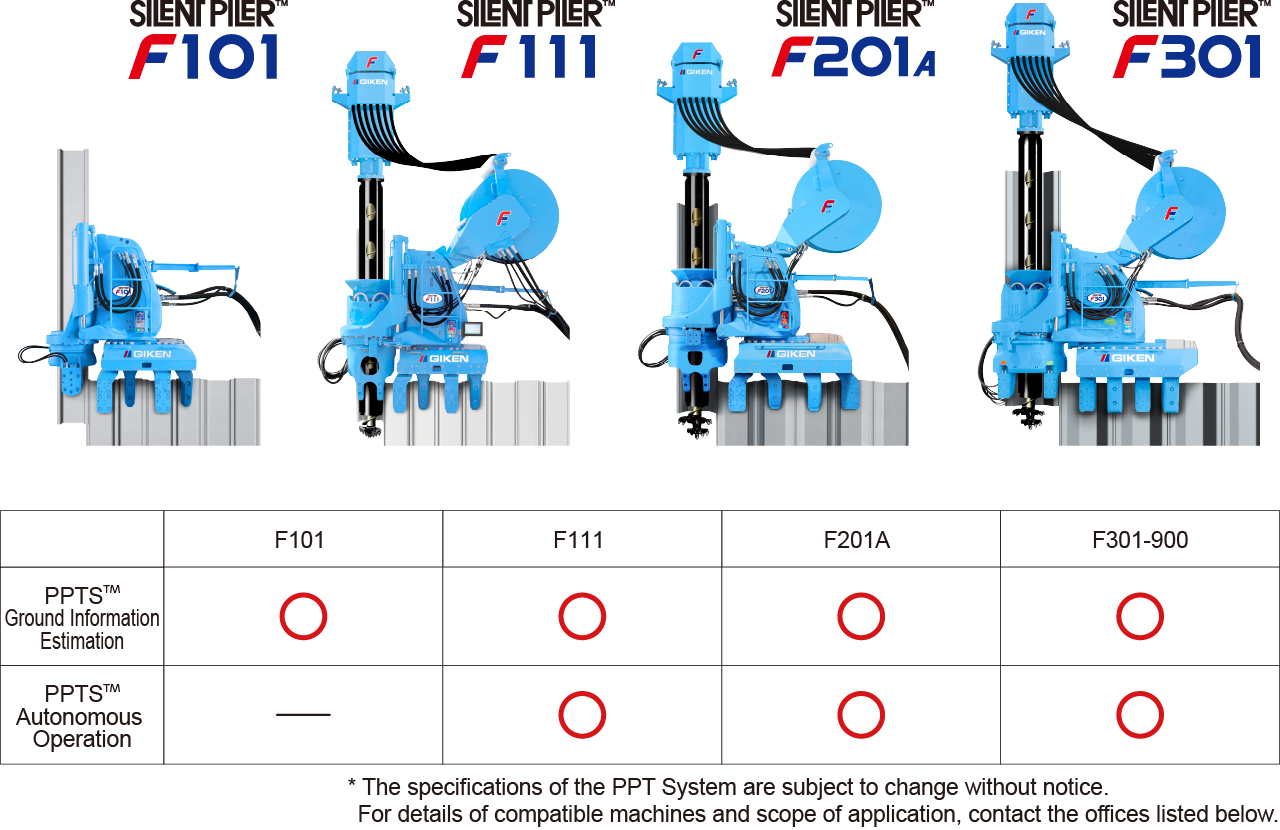
As of February 2018


